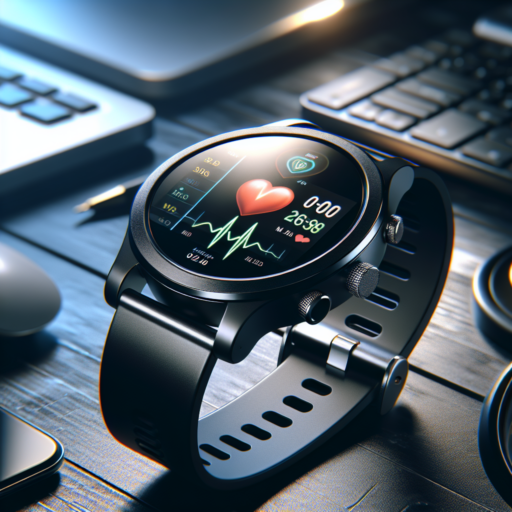What sensors are used to detect heart rate?
The detection and monitoring of heart rate have become pivotal in both health and fitness realms, utilizing various sensor technologies to provide accurate and useful data. The primary sensors used for this purpose are photoplethysmography (PPG) sensors, electrocardiogram (ECG) sensors, and piezoelectric sensors. Each type employs a distinct methodology to capture the heart’s activity, translating into data that can markedly impact health monitoring and fitness tracking.
Photoplethysmography (PPG) sensors are among the most widely used for heart rate monitoring, especially in wearable technologies like smartwatches and fitness bands. PPG sensors work by emitting a light into the skin and measuring the amount of light either absorbed or reflected by the blood vessels. This analysis offers insights into the blood volume changes, which correlate with the heart’s activity, thus determining the heart rate. Its non-invasive nature and ease of integration into wearable devices make PPG sensors exceptionally popular for continuous heart rate monitoring.
Electrocardiogram (ECG) sensors, on the other hand, provide a more detailed picture of heart health by measuring the electrical activity generated by the heart as it contracts. ECG sensors are commonly found in medical settings and specialized wearable devices. They use small electrode sensors placed on the skin to capture the electrical signals from the heart, enabling the detection of heart rate as well as the identification of various heart conditions. This makes ECG sensors invaluable for detailed heart health assessments.
Another noteworthy technology is the use of piezoelectric sensors. These sensors detect heart rate through mechanical vibrations generated by the heartbeats. They are less commonly used compared to PPG and ECG sensors but offer unique applications in scenarios where traditional sensor placements are not feasible. By measuring the vibrations associated with heart activity, piezoelectric sensors can provide heart rate data without direct skin contact, showcasing their versatility in different monitoring contexts.
What is the most accurate heart rate sensor?
Identifying the most accurate heart rate sensor involves considering several factors including technology, placement, and personal health needs. Among the leading advancements in this area, optical heart rate sensors have gained prominence for their precision and user-friendliness. These sensors, using light-based technology to measure blood flow, are commonly found in wearable devices like smartwatches and fitness trackers.
However, when it comes to high accuracy, chest strap sensors stand out. Chest straps measure electrical signals from the heart, providing data that is closer to what you would get from medical-grade equipment. They are particularly favored by athletes and individuals engaged in serious training regimes due to their low margin of error. Despite the convenience of wrist-based sensors, the positioning and constant contact of chest straps with the skin often yield more consistent and reliable readings.
Within the broad category of heart rate sensors, several brands and models have risen to the top for their accuracy and reliability. Polar and Garmin, for example, offer some of the most highly regarded chest straps in the market. For optical sensors, devices like the Apple Watch Series and the Fitbit Charge line have been recognized for their impressive accuracy, especially in day-to-day fitness tracking. Nevertheless, choosing the most precise heart rate sensor also depends on individual needs, the nature of physical activity, and personal comfort with the device.
No se han encontrado productos.
Is there a heartbeat sensor?
When discussing the evolution of health monitoring technology, the question of whether a heartbeat sensor exists is pivotal. This innovative technology, often integrated into various wearable devices, has transformed how individuals track their cardiovascular health. Heartbeat sensors use sophisticated mechanisms to monitor heart rate in real-time, providing valuable insights into one’s physical condition and overall health.
These sensors operate by detecting the blood volume changes in the microvascular bed of tissue, utilizing a methodology known as photoplethysmography (PPG). This non-invasive approach allows for continuous heart rate monitoring without the need for cumbersome medical equipment. Consequently, heartbeat sensors are now a staple feature in fitness trackers, smartwatches, and even smartphones, catering to the increasing demand for personalized health analytics.
Furthermore, the integration of heartbeat sensors across a variety of platforms has encouraged a more proactive approach to health and fitness. From athletes seeking to optimize their training to individuals monitoring their heart rate for medical reasons, these sensors offer indispensable feedback. Their applicability extends beyond mere fitness tracking, contributing to research in cardiology, and potentially saving lives by detecting irregular heartbeats that could indicate more serious health issues.
What instrument is used to measure the heart rate?
The primary instrument used to measure heart rate is a Heart Rate Monitor (HRM). This device efficiently tracks the number of heartbeats per minute, offering vital data for assessing overall cardiovascular health. Heart rate monitors come in various forms, including chest straps, wristbands, and watches, making them accessible for individuals during workouts, daily activities, or under clinical observations.
Among these, chest strap models are praised for their accuracy. They closely monitor the heart’s electrical activity, similar to an electrocardiogram, making them a preferred choice for athletes and fitness enthusiasts. On the other hand, wrist-based HRMs have gained popularity for their convenience and versatility, integrating heart rate measurement with smartwatch technology to provide users with real-time data, health insights, and more.
For more detailed and medical-grade monitoring, Electrocardiograph machines (ECG or EKG) are also utilized, especially in healthcare settings. These machines offer the most precise readings by capturing the electrical signals of the heart, though their complexity and cost limit their usage primarily to professional environments. Ultimately, selecting the right heart rate measuring tool depends on the user’s needs, whether for casual monitoring, fitness tracking, or medical diagnostics.


